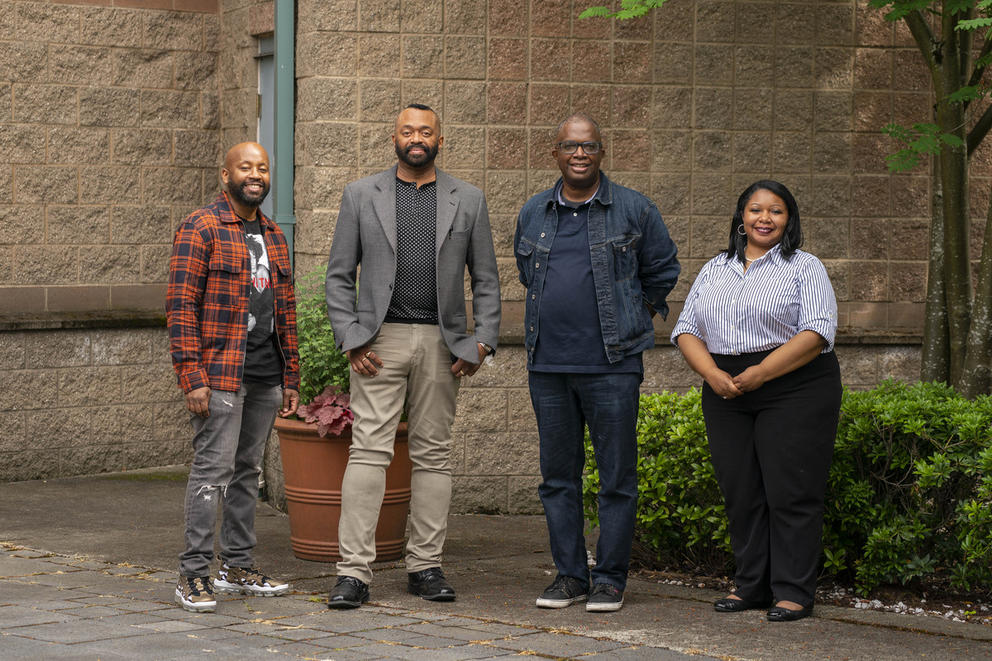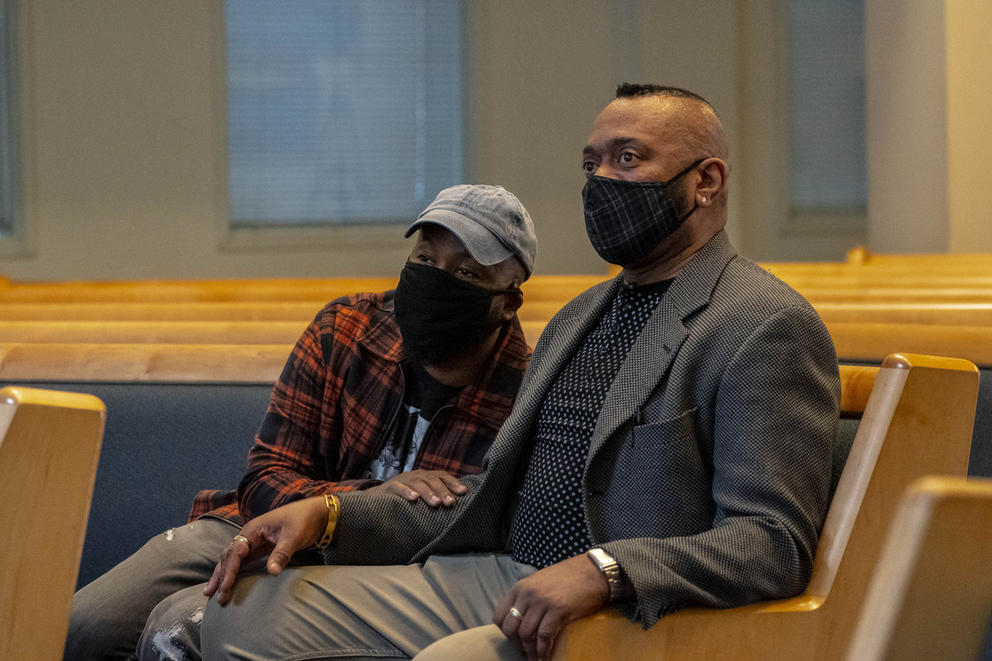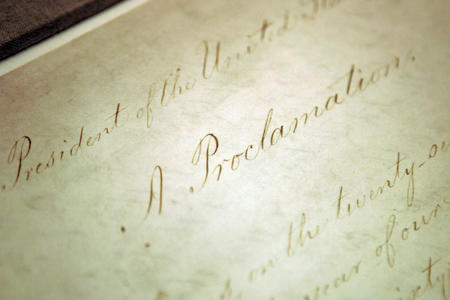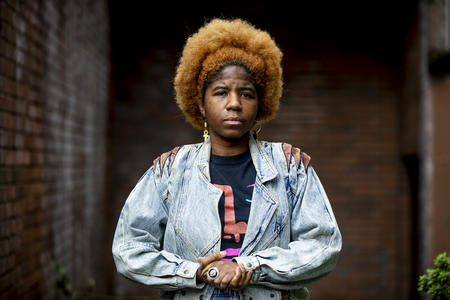“When I came across that quote, the idea of creating a cultural ensemble that would travel with this message of hope within the context of Black musical artistic heritage was born,” DeBardelaben says. “I knew that if we could create something living and vibrant and colorful and rooted in our cultural artistic tradition … it could change lives. It could change perspectives, attitudes and mindsets. And it could honor our ancestors.”
This week, half a year later, NAAM’s African American Cultural Ensemble (ACE) — consisting of 10 local singers, some of whom work at NAAM — is making its debut. The inaugural performance will be virtual, screening June 15 (and viewable online thereafter) during the “Juneteenth: Lift Every Voice” event, a collaboration of NAAM and nine other African American museums across the nation to commemorate the 156th anniversary of June 19, 1865, the day the enslaved people of Texas at last learned that all enslaved people in the U.S. were free. ACE will perform the 1970s hit “Ooh Child” (popularized by Chicago soul group the Five Stairsteps) in a previously recorded video.
LaNesha DeBardelaben, president and CEO of the Northwest African American Museum, speaks during an event for members of the museum’s African American Cultural Ensemble at New Hope Missionary Baptist Church on June 12, 2021, in Seattle. “We had to work within the limitations of a pandemic,” DeBardelaben says. (David Ryder for Crosscut)
“Ooh-oo child/ Things are gonna get easier,” DeBardelaben says with a lilt during a recent phone call, as she explains how the song’s message overlaps with that of ACE. “This choir is a prominent display of a commitment to uplifting our community, our region and our nation with hope, help and healing for our time,” she says.
To DeBardelaben’s knowledge, NAAM is the first African American museum to establish its own, permanent gospel choir. A seasoned museum leader, DeBardelaben has spent two decades working mostly with visual arts and heritage exhibits. But the moment the idea of “bringing hope” entered her mind, she knew music was the only possible answer.
“Music is a universal language,” she says. “Music speaks to the soul in ways that other art forms may not be able to.”
Plus, DeBardelaben notes, music has always been a key part of the African American experience. “Going back to African drumming, the African musical traditions and then the African American Negro spirituals — [which] told stories, gave direction, literally, to freedom — recorded and circulated messages of resistance, liberation, oppression and faith and hope.”
Black blues music, she adds, also “oftentimes had messages about being down and out — but holding on, and not giving in and not letting go of what we believe and what we hope for.”
While a choir was a logical choice, it wasn’t an easy one. At the time — in November 2020, before the COVID-19 vaccine was approved — no one knew when gathering would be possible again. What we did know was that singing, in person, was a risky endeavor. Superspreader events like the Mount Vernon choir practice were etched into DeBardelaben’s brain.
But besides singing in a room together, “there was no other model for how to be a choir,” DeBardelaben says. Let alone how to form a choir.
“That was a task in itself,” says Jason Turner, a musician/composer/producer who is also a museum educator and tour guide at NAAM. Now he’s adding ACE director to his resumé. Turner was able to lean on his extended musical network, which includes being a gospel soloist for the Seattle Peace Chorus and for Pastor Patrinell “Pat” Wright’s legendary Total Experience Gospel Choir. He recruited some of his former Total Experience choir members for ACE, one of whom was then able to persuade prominent Seattle vocalist Josephine Howell to sign on.
In a matter of weeks, “everybody just jumped on board,” Turner says. “They came together and we got it done. It was pretty miraculous.”
The group’s first get-togethers this past winter happened virtually. But they soon found Zoom doesn’t work as well for singing practice. “Not all internet connections are created equal,” notes L. Patrice Bell, NAAM’s director of guest services and external affairs, a longtime singer and, now, ACE member. “Zoom doesn’t translate when it comes to singing harmonies,” Turner adds. “There’s so much delay, you can’t really hear the harmony.”
For the next two rehearsals, they took a different tack: a hybrid model. A pianist, the music director and about five ensemble members — all masked — met at St. Therese’s Catholic Church (where Kent Stevenson, co-ACE lead, is the music director) to learn the soothing harmonies of “Ooh Child.” The group spaced out across the pews while other choir members tuned in on Zoom, via Turner’s handheld cellphone. After at-home choir members got a sense of the song’s harmonies, they each sang their part over Zoom to ensure they had gotten the hang of it.
Soon after, Turner says, “We just decided: ‘You know what, let’s just social distance, wear our masks, and everybody come.’”
L. Patrice Bell sings “Lift Every Voice and Sing,” also known as the Black national anthem, during a recent recording. “NAAM’s had a whirlwind of a year,” she says. “And we’re still finding ways to inspire others while we also inspire and encourage ourselves. We really want people to know that, regardless of what you’re going through, there’s hope.” (David Ryder for Crosscut)
A few weeks later, on a crisp, sunny May day, choir members assembled again in the St. Therese sanctuary, spreading all the way out, 10 feet apart. They experienced what they already suspected: Singing in the same room with a mask on beats singing over Zoom by a mile. As they gathered on the church’s red brick steps to record footage for the Juneteenth video — donning black pants and a rainbow of pastel shirts — the group’s potential for engaging live performances became even clearer.
“People were coming by, like, ‘What’s that?’ The song really attracts folks,” Turner says. “But the thing was everybody was outside. Everybody was joyful and happy. It was a nice sunny day. So the song does resonate a really good warm feeling.”
Still, to be safe, the group opted to record the song for the national “Lift Every Voice” event individually, at home. An audio engineer wove the single tracks into a united harmony, which will be the soundtrack for a video featuring images of the soloists, photos of Black youth, Black Lives Matter protests, the choir on the steps and the clouds parting to reveal a shining sun.
“We didn’t want to go with a model of the individual boxes of people on Zoom singing together,” says DeBardelaben. “...We wanted something more creative, more inspiring. Something that really would complement the messages of hope and hopefulness and beauty, and possibility and perseverance.”
The members of ACE perform "Ooh Child" during a recent dress rehearsal on the steps of St. Therese church in Seattle. (ACE/Northwest African American Museum)
As for ACE, possibility and perseverance mean getting a repertoire together in anticipation of the return of live in-person performance. After the virtual debut performance this week, the group says it may add in-person, outdoor concerts to the calendar this summer. The choir plans to perform in person in November as a part of the 60th anniversary of Dr. Martin Luther King Jr.’s 1961 visit to Seattle, as well as during Kwanzaa celebrations and other community events.
“Gospel music, and Black music in general, has always been the sustainer for us,” says Turner. “The thing that has kept us together has brought us through many of our struggles; from being enslaved to civil rights to today. ACE is part of that tradition that continues to provide music that is healing for the community.”
Turner and other choir members are eagerly anticipating the moment when they can “lift every voice and sing” in person. “Doing it virtually was just a means to an end,” Turner says. “We definitely have to perform live. Live performance is where it’s at.”










